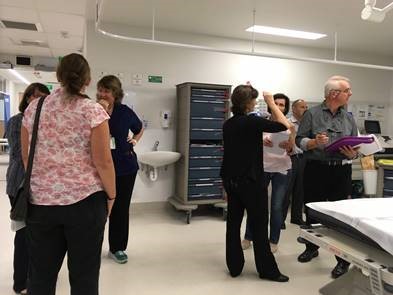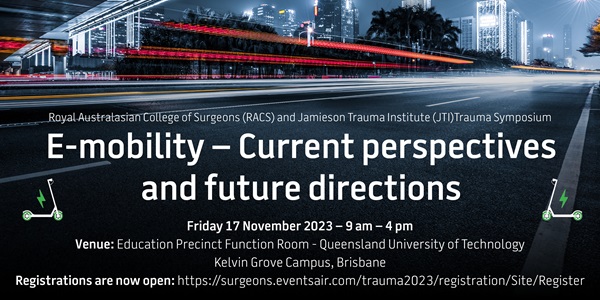2023 | Volume 24 | Issue 5
Author: Professor Zsolt Balogh FRACS, Newcastle, New South Wales, Australia, Chair, Trauma Care Verification Committee

The Trauma Care Verification Program is a multidisciplinary process developed through the Royal Australasian College of Surgeons (RACS) and supported by the colleges of Anaesthetics, Emergency Medicine and Intensive Care Medicine as well as the Australasian Trauma Society and nursing representatives (1).
Established under the chair of Dr Jim McGrath in 2000 with a RACS grant for a 24-month pilot, the self-funded program has since undertaken more than 80 site visits with a further 14 already scheduled for 2024 (image 1).
The program incorporates all phases of acute care from pre-hospital through to discharge. It assists trauma services to evaluate and improve trauma care by helping identify the strengths and weaknesses of the hospital's trauma service.
Reviews undertaken use an independent benchmarking process—a standard established by the American College of Surgeons and refined for the Australian and Aotearoa New Zealand health setting. This process classifies service level capabilities across four levels:
Level I: Facilities provide the full spectrum of care for the most critically injured patient—from initial reception and resuscitation through to discharge and rehabilitation.
Level II: Hospitals should provide identical clinical care for injured patients to a Level I service, but not necessarily the same level of regional, research and education activities.
Level III: Service is the provision of high-quality care to non-major level trauma, with the capability of stabilising major trauma patients before referring and transferring them to a higher trauma level.
Level IV: Services are not intended to care for major trauma patients beyond a safe period of transfer but are essential for those occasions where individual patients may present with major trauma or in rural situations where they are the closest hospital.

A key strength of the program is that it is a multidisciplinary endeavour, with the review team including senior trauma clinicians (medical and nursing). The standard is continually evolving and is based on best available evidence, high level guidelines and consensus across our partners in other medical colleges including the Australian and New Zealand College of Anaesthetists (ANZCA), the College of Intensive Care Medicine (CICM) and the Australasian College of Emergency Medicine (ACEM).
Even when individual trauma centres perform well under the verification process, the overall trauma system (including the network of lower-level trauma hospitals, pre-hospital care, inter-hospital transfer arrangements and outreach education) can have room for improvement(2). An important development for the Trauma Care Verification Program has been to undertake trauma system reviews alongside individual trauma centre reviews.
The program reviewed the trauma system of Aotearoa New Zealand in 2017, believed to be the first ever whole of country trauma care verification(3). In 2021 RACS, the NSW Institute of Trauma and Injury Management and the New South Wales State Insurance Regulatory Authority committed to a review of all trauma centres in the state. Despite encountering some early challenges with the COVID-19 pandemic, the project is well underway and is expected to be completed by the end of 2024. In early 2023, a whole of state review of South Australian trauma centres was completed.
With the demand for verification visits rapidly increasing in recent years, the panel of reviewers continues to grow. We are very grateful for the expertise, time and commitment of our reviewers and to members of the Trauma Care Verification Committee for their dedication to overseeing this program.
I would encourage anyone interested in getting involved with the program or who would like more information to contact the Trauma Verification team at [email protected]
The Trauma Care Verification Program is a powerful tool to make positive changes through peer review and one which has a lasting and visible impact on trauma care delivery.
References:
(1) Warren, Kirrily-Rae J. MBBS; Morrey, Chris BSc, MBBS; Oppy, Andrew MBBS; Pirpiris, Marinis PhD, MEpi, MBBS; Balogh, Zsolt J. MD, PhD∗. The overview of the Australian trauma system. OTA International 2(S1):p e018, March 2019.
(2) Balogh, Z.J. (2014), Editorials. ANZ J Surg, 84: 499-500. https://doi-org.ezproxy.surgeons.org/10.1111/ans.12573
(3) Flabouris A, Civil IDS, Balogh ZJ, Isles S. The New Zealand Trauma System Verification. J Trauma Acute Care Surg. 2020 Sep;89(3):585-596. doi: 10.1097/TA.0000000000002774. PMID: 32345895.